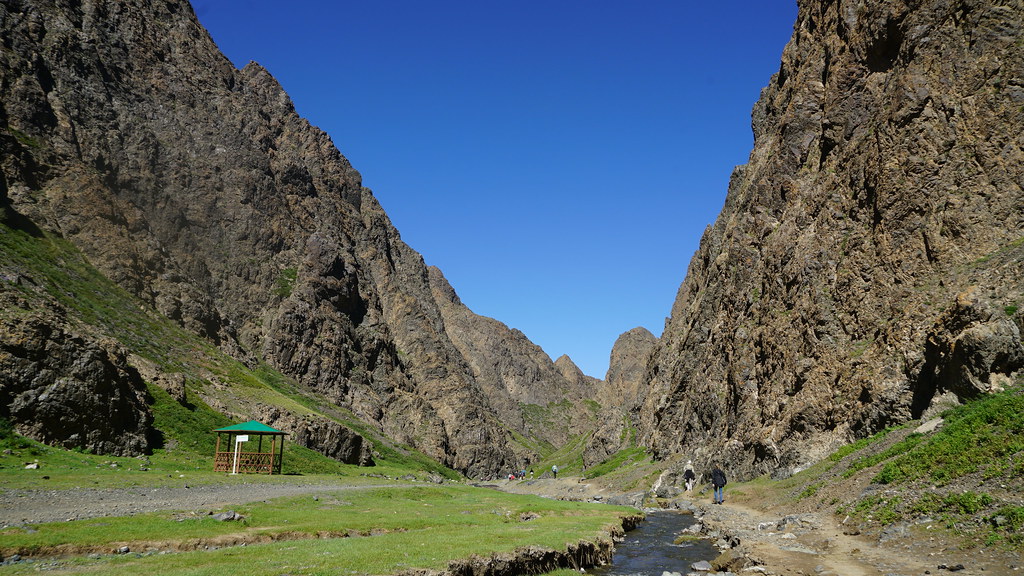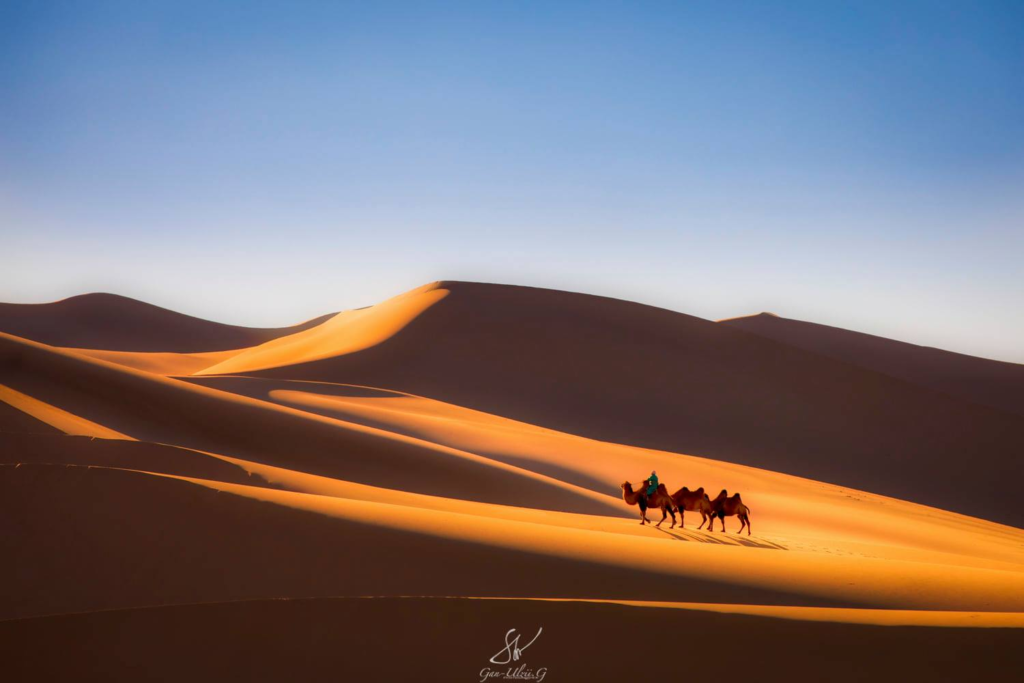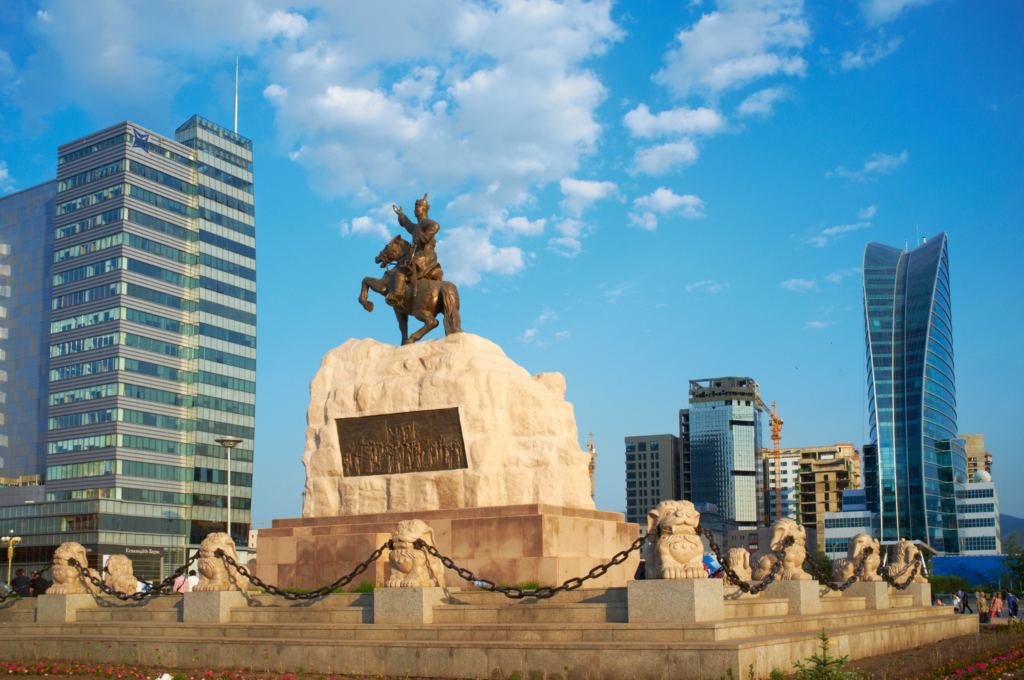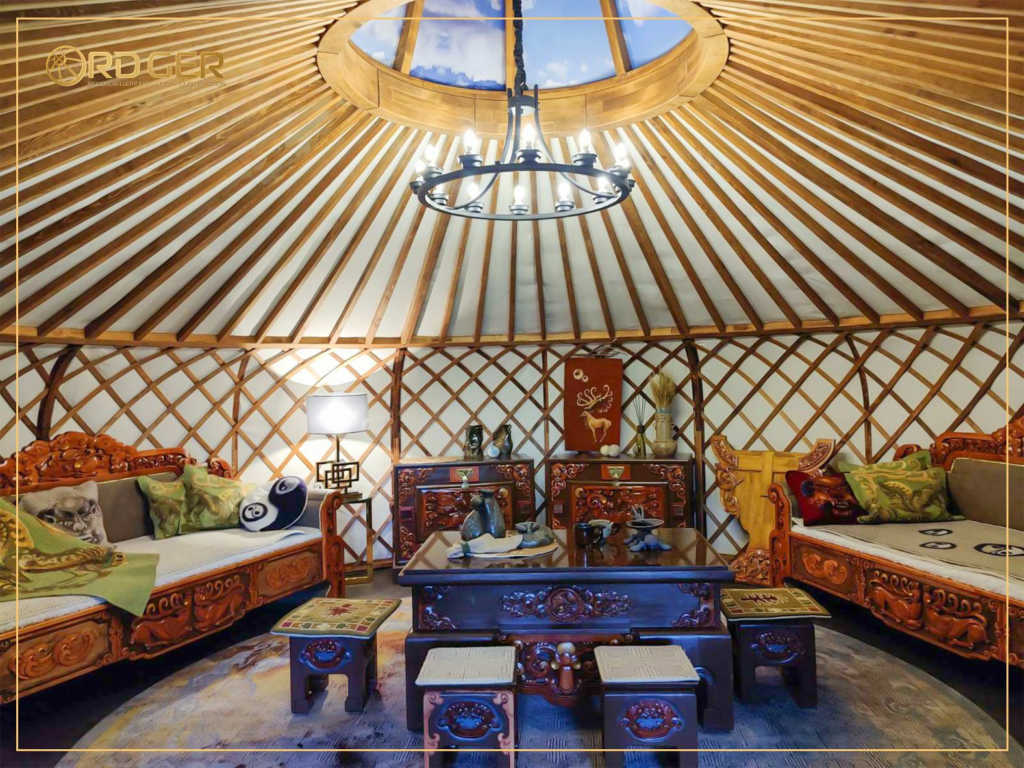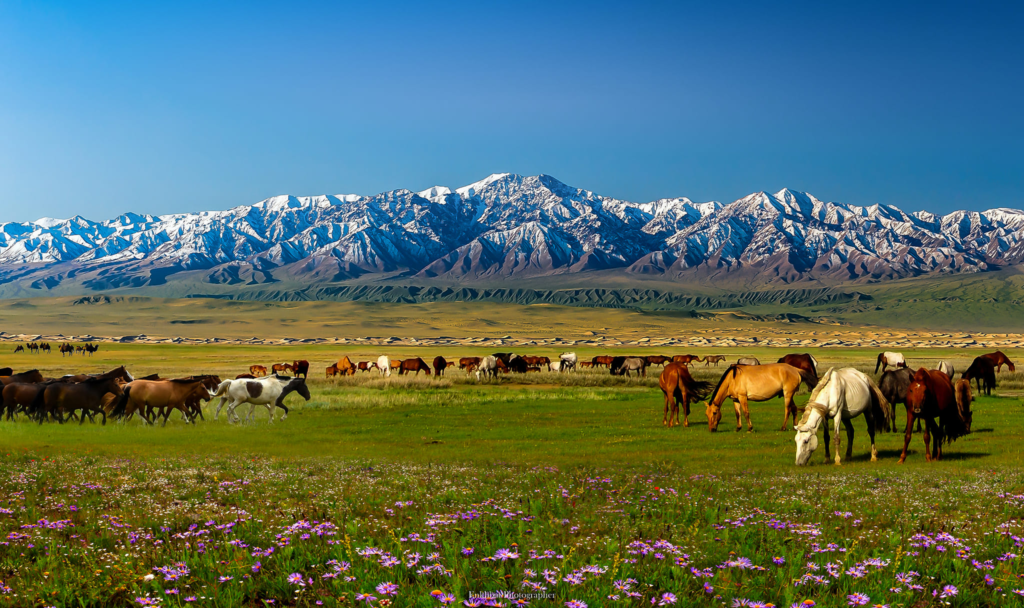TOUR FROM GOBI TO KHANGAI
17 DAY TOUR FROM GOBI TO KHANGAI
Embark on a remarkable journey from the captivating Gobi Desert to the pristine landscapes of the Khangai region with our “Tour from Gobi to Khangai.” This tour offers a seamless transition from the surreal beauty of the Gobi’s sand dunes and rugged canyons to the lush green valleys and alpine meadows of the Khangai Mountains.
Explore the diverse wonders of Mongolia as you journey through these contrasting landscapes, immersing yourself in the nomadic culture and natural beauty that define this incredible nation.
What’s Included
Accommodation
Hostels, guest houses & hotels
Adventure Leader
Epic Adventure Leaders
Local transport
All transport
Activities
Tonnes of activities included.
Optional activities can be added.
Full itinerary

Arrival to Ulaanbaatar and transfer to the hotel. Spend the remaining morning at leisure and take a guided tour of Ulaanbaatar city. Choose between the Natural history museum with its collection of dinosaur fossils and the National history museum displaying traditional costumes and introducing the turbulent history of the Mongolian nation. Visit to the main city square and the Zaisan hill that provides a panoramic view of the city. In the evening will be held a show of traditional music, throat singing and contortion. Welcome dinner in one of best restaurants of the city. (hotel B/L/D)
There are abundant wildlife species such as marmot, wolf, gecko, and marmot from Argali Mountain to Bugzin and Berkh Uul. There are also rare birds such as White Crane, White Crane, Black Crane, Blue Crane, Black Stork, and White-tailed Eagles. The nature is beautiful and there are also historical and cultural monuments. For example, the ridge of the city of the High-dov in the XIII century is here. There are also ancient tombs, shrines, cemeteries and human stones.
“Gun Galuut” tourist camp L, D
In the territory of Gorkhi-Terelj tourism area of Khentii Strictly Protected Area, 65 km of Ulaanbaatar is located in Nalaikh district, which is shaped like a frog with frogs. It’s 24 meters high, and it’s called Silver Rocks and Silver Rocks.
In the Battle of Zuunkhaan, King Galalanboshigt King Manchu suffered a great deal of damage, but he escaped the escaped blockade of the unstoppable battle and fed the remaining power behind the Turtle Rock. When the warriors were prepared to flee to the west for fear of escaping, they left the money on the Turtle Rocks to the canyons, and the Queen from Manchu did not go to the gold and silver coins and left them to the west. Since then, the frogs have been called the “Silver Cliffs, Silver Rocks.” The old man said that the monks were honored with the richness of the silver and the witches of the king’s people, giving them the gift of their food and giving them the gift of good fortune. When the Galunganbööröt king went westward, he went over the hills of the Turtle Rock, and his helmet appeared to be glittering in the sun, and he called it glitter. It is still called shining. On the top of the mountain, he was very angry and pulled his horse out of the horse. The Khalkh and the lords of the Khurkh were plotting against the enemy of the Mongols who did not fight together for the sake of the Mongols. On the top of the mountain there is a flat area, and since then it has been known as the “Dulce” of the local people.
The queen who sleeps for the great king’s money and the gold treasures is talking about the “Mother of the Mountain” and the Mother Nature of Mongolia. There is a mountainous woman lying on the north-west side of the Turtle Rock, which is called a Mountain. The girl does not take wood, plants, onions and nuts, but it is a woman who is so friendly that it is a very violent mountain that can not be rocked.
The Gorkhi-Terelj National Park is located 70 km northeast of Ulaanbaatar. In addition to the city, it is possible to explore the unique natural features of mountains, rocks, fowls and fowls, and to familiarize themselves with nomadic life. The rocks of this land are made of granite rocks during the Mesozoic era, and they are strangely shaped by water, wind, and years. One of these is the giant rock that is known as the “Turtle Rock”.
The complex is located on the historical site of “Tsonjin boldog” in Erdene soum, Tuv aimag, which is 53 km southwest of Ulaanbaatar. This is a great advantage compared to a drum that is about 300 km or more in the road to reach most historical and cultural monuments and natural scenery in Mongolia. The total area of the complex is 212 hectares and the cemetery is located in the center of the complex. The statues of the horse are 48 meters high along the base of the base. The base is 10 meters in diameter and 30 meters in diameter. The horse’s statue is 38 meters high. The base of the statue is located in the royal museum, entertainment hall, restaurant, bar, conference hall, and souvenir shop.
From the statue to the horse’s tail, the stairs of the horses are still covered with the horse’s body and then walk through the chest to the saddle and jump over the horse’s neck and observe the beauty of the complex around the head. Over 200 strollers around the monument are equipped with modern furniture and equipments. The hotels are located in the form of ancient stamps used by the Mongolian tribes of the thirteenth century. At night, there are different types of light in the sky as bright stars. The statue is the largest monument in the world. The complex is not only for foreigners but also for domestic tourists. Tourist camp B,L,D
Dundgovi is 230 km from Ulaanbaatar. The rocks and rocks are located about 300 square miles in height, surrounded by surrounding areas. The highest peak is 1768 meters above sea level. In the valleys and valleys of the mountains covered with granite flows, springs and springs originated from the mountains.
There are many places of interest such as the Jargalant Cave, the Shed, the Mineral Springs, and the Ger Rock. There is a picture of the Bronze Age in the small rock called Ger, in the southeast of the Lower Steppe. The ibex, bows, arrows, and small dogs, similar to humans and dogs, are engraved. There is another rock in the rock that is not far from it, with a width of 170 cm long and 90 cm wide.
The Jargalant cave is located at the lower northeast of the valley of the Lower Chuluun valley. This cave is 18 meters long, deep with a large mouth and deeper than 2 meters in diameter. In the area there was a single goat, and the goat went into the cave and disappeared and did not come back. It is said that the cave was closed to a narrow area of about 3 meters in order to avoid re-entry. The currant around the cave grows beautifully during spring and summer.
“Goviin shine khurkhree” tourist camp L, D
Today we will drive to Tsagaan Suvarga where is an ideal place to explore limestone cliff. The place seems as the alien land which is more attractive. There you can take photos, hiking and meditate under the sunset.
“Tsagaan suvarga” tourist camp B,L,D
The famous “Yol valley” is one of the nine wonders of the South Gobi province, located on the eastern hill of the “Gobi Gurvan Nuadu” mountain, the continuation of the Altai Mountains. This beautiful mouth was very early in 1965, by the Decree of the Presidium of the Great Powers, Mongolia became the Strictly Protected Area of Mongolia. In 1993, the State Great Hural approved Resolution 83 by the Gobi Gurvan Nuur National Park. One of the most beautiful places in the eastern part of the beautiful “Yolga Am” is the wildlife of the mountains, icebergs, argali, ibex, leopard, lily, gray wolf, and the most famous tourist attraction Wallcreeper / The Falcon, Eagle eagle / Dragon eagle / Lammergier /, Altan snowcock / Alta’s snowcock / is a beautiful natural place. Khan Bogd tourist camp B L, D
The Khongoryin sand is sand, dune and sand which occupies about 3% of the land area of Ömnögovi aimag. Including the Seventeen, the Nomgon and the Erygut hills, 185 km to the east from east to west, the largest sandstone of sandstone, which is 925 square kilometers in size, is one of Mongolia’s largest and wealthiest. It is a depressing depression in the western east of the Khongoryn Sand dunes, Horseshoe, Hunk Lake, Harvest and Yellow bamboo, bamboo, saiga, saxaul. Here you will ride camels and visit nomadic family and enjoy it well.
The sand dunes are 10-195 m from the bottom to the top of the bed, and when the wind hits, it sounds like a lot of music. An example of this is the voice of the Khongor River. This is because of the extremely fine winds of the sand and the electrons scattered and the sound of its positive negative electrochemical outburst. The Khongoryn’s sand is a golden yellow mountain with a ridge and a stream of green springs on the bottom of the valley. The white lake with herd of ravines and its ravine is surrounded by waterbirds. Gobi erdene tourist camp B, L, D
(Another name is Red Seas) – A place in Umnugovi Aimag and Gobi Mountains in Mongolia. Discovery of rare paleontological finds is known worldwide. In addition to the discovery of many dinosaur eggs, dinosaur nests were found in the world for the first time in the world. In addition, the vaccination and other dozen mammals were found.
Mongol gobi tourist camp B, L, D
Gundjambuu Monastery (Memorial Hall) is located in the territory of Saikhan-Ovoo soum of Dundgovi aimag, on the banks of Ongi river and Saikhan-Ovoo mountain slopes. Ishtaronlhundev, his disciple, Tserendam Damsurdorj, built between 1760 and 1810. It is located about 18 km south of the Saikhan-Ovoo soum center, with a population of more than 1,000 monks, one of the largest Khalkha monasteries. 15 km away from the monastery, and another monastery called “Khoshuu monastery” along the banks of Ongi river. The monastery of the monastery of the monastery of the Onggi Monastery, the Monastery of the monastery of the monastery, was called “Ongi monastery”. In the monastery, there were 4 training monasteries, which included religious philosophy, secret mantra meditation, medical or mamba, mathematics. “Ongi secret” tourist camp B, L, D
Erdene Zuu is the oldest Buddhist monastery in Mongolia. The monastery is located near the center of Kharkhorin soum of Uvurkhangai aimag and is located near the ancient city of Karakorum. This monastery belongs to the Orkhon Valley of the World Heritage List.
In 1580, when he met with the Dalai Lama, his brother and brother, Tumen Khan, Guthan Khan with the Dalai Lama, promised to build a temple in his home, as the Dalai Lama advised him to restore the old temple of Karakorum, reconstructing the temple in ancient Tahai in 1585, as the main temple of the Erdene Zuu monastery written in the manuscript of the Bible. In order to build the monastery, the rock of Karakorum was used.
Then, in 1586-1674, he built three hundred church conventions and Rigussum gombs churches. The monastery of Erdenezuu III, Luvsan-Oddser, built a stupa at the four corners of the old Takah River belt, which is the foundation of the current plaza. The monastery was killed by the war in the 1680’s and began to rebuild the beginning of the XVIII century. Between 1701 and 170, the Ochirdai temple and Avid temple complex and the Central High Stupa were built. From 1771 to 1792, Tsogchin Ikh Daraun and the current Lamiran temple complex were led by Dagvadarjaru, the seventeenth Dalai Lama. In 1796, the renovation work of Erdene Zuu monastery was generalized by the Dagvadharda monk and adjusted the prices of the monastery buildings with the Chinese company Yun-da-a. During the renovation, the buildings were built before 1796 and 50 pyramids were built at the base of the old Takah River basin. Between 1802 and 1813, 56 pavilions and walls were constructed between the pyramids built by princes, princes, dyed, monks and folklore. Since then, the temple of Dashchoilin Province in 1803 was built in 1826 and the temple of Darjaa gomun and Janchivlin Province was built. By 1872, 62 churches were completely rehabilitated.
In the early days of Erdene Zuu monastery, the rituals of the Shogunate have not yet been introduced, as the resolutions of the monastery were solved, in accordance with the direction of the Mongols traditionally oriented. Therefore, the monastery remains a miracle in the construction and decoration of the rest of Mongolia, as it is in the same way as the general distribution of furniture in Mongolia, and the place where to build a place to build a monastery.
This monastery is surrounded by 102 stupas and 100 stacks are displayed on this picture and 2 are hidden behind it. The number 108 is a sacred number for Buddhism, and the number of Buddhist mandates is 108. However, the number of pyramids did not reach this number. Here you will have the ethnic concert and take photos and ejoy it.
“Munkh tenger” tourist camp B, L, D
Terkhi Tsagaan Nuur is a freshwater lake located at the Hoggy cookware in Tariat soum, Arkhangai province. The north and south side of the Khangai Mountains originate from the Khalbo volcanic hot melt.
On the small island of the lake, birds feed their nest. In the lake, black goose comes in very much, and dives up to 5 meters deep. There are fishes in the Selenge basin. And rare birds live. The Lake Head belongs to the Harmonian Strictly Protected Area.
There are over 10 main streams in this lake. Only one main source flows out and is the sum of the Sum. The river flows about 50 km to the Chuluut River.
The lake is one of the best places to visit CNN information center in 2011. You can trek around the area and wander the land.
“Maikhan tolgoi” tourist camp B, L, D
Today we will pass through the high mountains. Taiga region of North Mongolia. We are located to the East Lake and located within the lakes and high mountains.
Lake (Khuvsgul) is located in northern Mongolia in Khuvsgul aimag. The lake is Mongolia’s largest and deepest lake. It is estimated that Hövsgöl is one of the seventeen ancient lakes, 2 million years old. The volume of water is 381 km³, which equals 0.4 percent of the world’s freshwater.
Lake 46 is poured into Lake Khuvsgul and streams to the Selenga River, which is the only river of Egiin. It takes about 1000 km to reach the Baikal Lake. The distance between these two lakes is just 200 km.
TheKhuvsgul Lake National Park is part of the transition zone of the Siberian taiga and Central Asian Steppes. Water transport takes place in summer between two ports, namely Khatgal soum on the southern and northern shores of Lake Khuvsgul. It is rich in phosphorite around the Lake. The lake is a major tourist destination in Mongolia.
“Alag tsar” tourist camp B, L, D
The Tsaatans in Hövsgöl taiga are called Tsaatans who live on reindeer for four seasons. In 1968, a carved rock carving in Sagil soum, Uvs province was a figure drawn by a reindeer and a long javelin. The paintings were used in ancient Mongolia for reindeer and forage reindeer. In the past, it was named after reindeer herds and became herders. In the taiga they speak in Tuva. Shamanism. It has its own ritual to celebrate a marriage. The main way of their livelihood is to rejoice, to benefit from it, to hunt. The areas where the reindeer populations live are the Khangai, Jams, Red Taiga mountains, Tengis, Sharga and Shisheg River. There are 95 Tsaatan people living in Baruun Taiga, 95 in 19-22 households, 17-19 in the East taiga. There are about 150 Tsaatan people in the soum center. According to the 2000 census, 269 people were counted as “Tsaatan”. There are 400 Tsaatan citizens in Tsagaannuur soum. The population census is often referred to as “Tsaat”, and the majority of residents in the soum center are registered as “immigrants”. Today you will visit tsaatan family and see reindeers closer and climb to the wishing rock that lets your dream come true. Also you will have bonfire tonight.
“Alag tsar” tourist camp B, L, D
In Khutag-Undur soum, Bulgan province, about 80 km northwest of Bulgan, there are four erasable volcanoes in Uran, Tulga, Togoo, and Jaley in the west of the Khuvsgul road. The mountains were in the Quaternary period, and lastly 20-25 thousand years ago. The fence is 1686 meters above sea level and the family’s mouth is full, with a diameter of 500-600 meters deep and 50-60 meters deep. The fountain is about 20 meters in diameter, with a circular lake with a depth of 1.5 meters and surrounds the lake around the forest. There are three erasable volcanoes – 12 kilometers south-west of the uranium mountain range – Tulga, Togoo and Pilots. The turtles of the Tulga Mountain are left to the east, to the south, to the north, and to the left of the three pieces of circular head like three corners of the cliff. The 1540 meters above sea level is the height of the Mountain Range at 1620 meters, and its west is 1560 meters high. The faucet of the frying mountain family is completely silent and is about 400 meters deep and 100 meters deep and is really like a large sheep pail. These mountains were taken into state protection in 1965 and made 5800 hectares of natural resources. Not only are the forests, but also aspen, aspen and birch. There are americans such as deer, argali, roe deer, pigs, ibex, marmots, squirrel, brown rabbits, and marmots. It is sparse, sparrow, owl, cuckoo, orchid and comes in the lake of ura. Reptile snakes in this region are common. During the cold season, these animals live in a warm volcanic heat and gas flame, and they are embarrassed. There is a grave and hieroglyphs in the Ikh Mountain Range.
“Unit” tourist camp B, L, D
Amarbayasgalant Monastery is a large Buddhist monastery located on the territory of Baruunburen soum, Selenge aimag, Mongolia, on the Mount Kharen mountain and on the Ivir river valley.
According to the Manchu Nirvaan Central Order, the monastery of the Zanabazar temple was built for the monastery of the former Ikh Khuree. Started in 1727 and completed in 1736.
The ruins of the monastery were destroyed during the 1937 massacre, and there were over 40 churches and temples, 207m long and 175 m wide, with 28 temples and temples inside the walls. In 1943, the monastery was taken into state protection and restoration began in 1988, and the portraits of gods were created in India.
Tourist camp B, L, D
To return to UB
Overnight at the hotel, go shopping /cashmere and others/ B, L, D
What our customers say
Tour Details
Price included:
- Guide
- Hotels
- Tourist camps
- Breakfast, lunch, dinner
- Horse and camel riding
- Horse guide
- Entry fees for monasteries Museums National parks
- Tickets of entertainments and camels and horse racing
- Cultural performance
Price excluded:
- International airfare ticket
- Insurance
- Drinks
- Emergency land rescue if required
- Tips etc…













